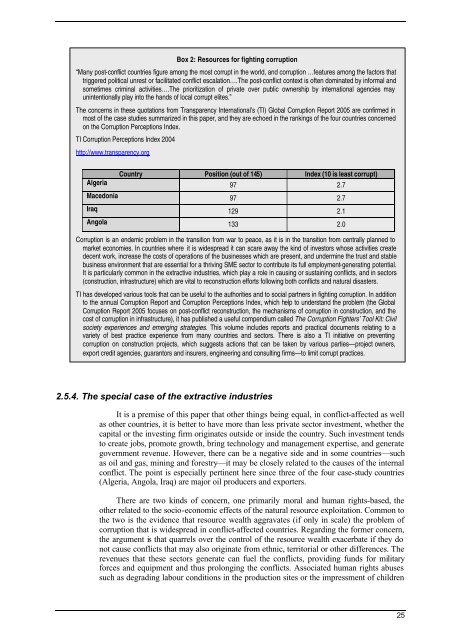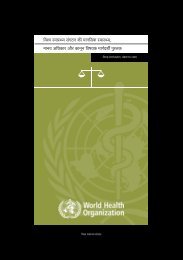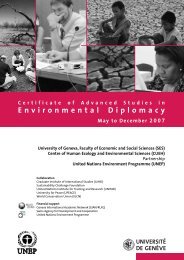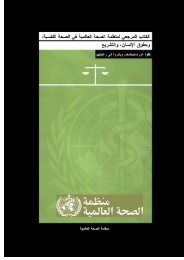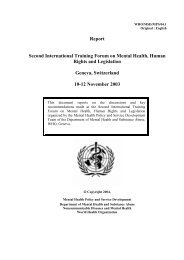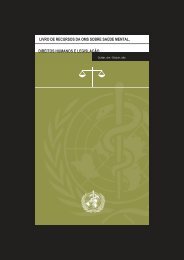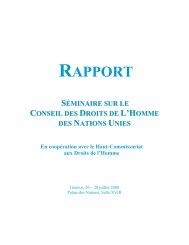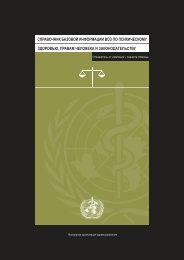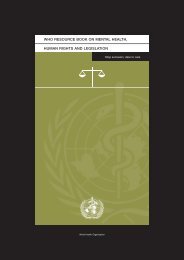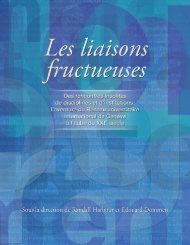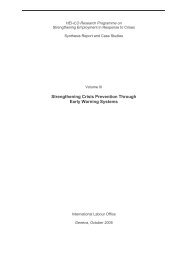Volume 1 Cedric - revised luca Final - RUIG-GIAN
Volume 1 Cedric - revised luca Final - RUIG-GIAN
Volume 1 Cedric - revised luca Final - RUIG-GIAN
You also want an ePaper? Increase the reach of your titles
YUMPU automatically turns print PDFs into web optimized ePapers that Google loves.
Box 2: Resources for fighting corruption“Many post-conflict countries figure among the most corrupt in the world, and corruption …features among the factors thattriggered political unrest or facilitated conflict escalation….The post-conflict context is often dominated by informal andsometimes criminal activities….The prioritization of private over public ownership by international agencies mayunintentionally play into the hands of local corrupt elites.”The concerns in these quotations from Transparency International’s (TI) Global Corruption Report 2005 are confirmed inmost of the case studies summarized in this paper, and they are echoed in the rankings of the four countries concernedon the Corruption Perceptions Index.TI Corruption Perceptions Index 2004http://www.transparency.orgCountry Position (out of 145) Index (10 is least corrupt)Algeria 97 2.7Macedonia 97 2.7Iraq 129 2.1Angola 133 2.0Corruption is an endemic problem in the transition from war to peace, as it is in the transition from centrally planned tomarket economies. In countries where it is widespread it can scare away the kind of investors whose activities createdecent work, increase the costs of operations of the businesses which are present, and undermine the trust and stablebusiness environment that are essential for a thriving SME sector to contribute its full employment-generating potential.It is particularly common in the extractive industries, which play a role in causing or sustaining conflicts, and in sectors(construction, infrastructure) which are vital to reconstruction efforts following both conflicts and natural disasters.TI has developed various tools that can be useful to the authorities and to social partners in fighting corruption. In additionto the annual Corruption Report and Corruption Perceptions Index, which help to understand the problem (the GlobalCorruption Report 2005 focuses on post-conflict reconstruction, the mechanisms of corruption in construction, and thecost of corruption in infrastructure), it has published a useful compendium called The Corruption Fighters’ Tool Kit: Civilsociety experiences and emerging strategies. This volume includes reports and practical documents relating to avariety of best practice experience from many countries and sectors. There is also a TI initiative on preventingcorruption on construction projects, which suggests actions that can be taken by various parties—project owners,export credit agencies, guarantors and insurers, engineering and consulting firms—to limit corrupt practices.2.5.4. The special case of the extractive industriesIt is a premise of this paper that other things being equal, in conflict-affected as wellas other countries, it is better to have more than less private sector investment, whether thecapital or the investing firm originates outside or inside the country. Such investment tendsto create jobs, promote growth, bring technology and management expertise, and generategovernment revenue. However, there can be a negative side and in some countries—suchas oil and gas, mining and forestry—it may be closely related to the causes of the internalconflict. The point is especially pertinent here since three of the four case-study countries(Algeria, Angola, Iraq) are major oil producers and exporters.There are two kinds of concern, one primarily moral and human rights-based, theother related to the socio-economic effects of the natural resource exploitation. Common tothe two is the evidence that resource wealth aggravates (if only in scale) the problem ofcorruption that is widespread in conflict-affected countries. Regarding the former concern,the argument is that quarrels over the control of the resource wealth exacerbate if they donot cause conflicts that may also originate from ethnic, territorial or other differences. Therevenues that these sectors generate can fuel the conflicts, providing funds for militaryforces and equipment and thus prolonging the conflicts. Associated human rights abusessuch as degrading labour conditions in the production sites or the impressment of children25


